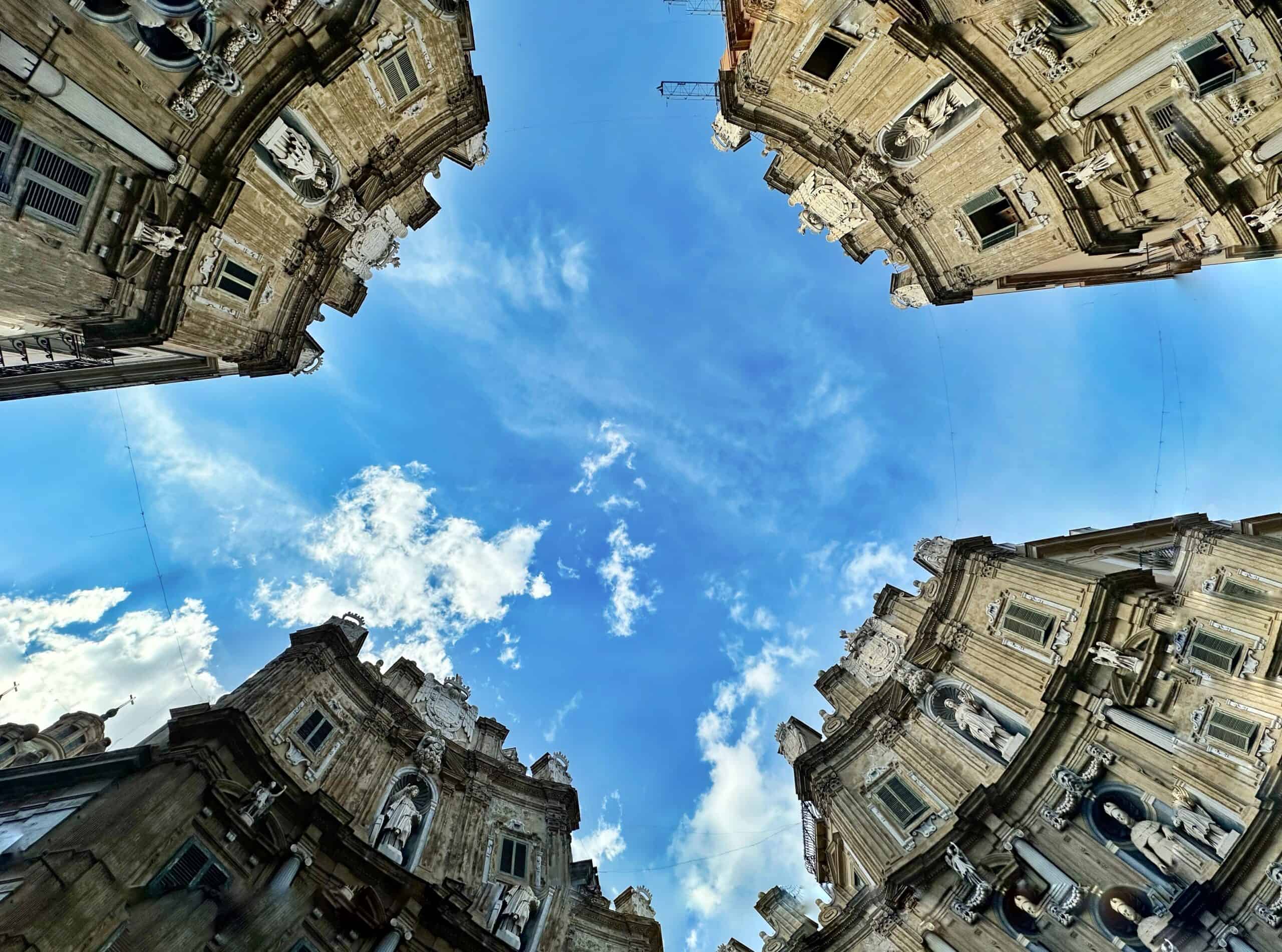
In the heart of the historic center of Palermo is the Pretoria Fountain, located in the square of the same name.
The Pretoria Fountain was built in 1554 at the behest of the Viceroy of Naples so that the garden of Palazzo San Clemente, his Florentine home, would be further embellished. The Fountain remained in Florence for 19 years until it was sold to the Senate of Palermo for economic reasons.
It was dismantled and then rebuilt in front of the Praetorian Palace of Palermo, from where it takes its name.
The statues of the fountain, in their nudity, were considered by the people of Palermo to be immodest, for this reason the square where the fountain was placed was initially called Piazza della Vergogna.
The Pretoria Fountain is a triumph of allegorical and mythological figures; some pagan gods such as Apollo, Venus, Hercules, and Bacchus as well as the four ancient rivers of Palermo: Maredolce, Papireto, Oreto and Gabriele.
Over the centuries, the fountain has undergone several restorations, especially in the twentieth century, when it was decided to restore it to its former glory.
Today it is one of the symbols of the cultural rebirth of Palermo and represents an important artistic heritage of the city.
Piazza Pretoria is just a short walk from the Quattro Canti.
Here Via Maqueda and Via Vittorio Emanuele intersect, once Via del Cassaro, the oldest street in Palermo.
In 1610, with the opening of the new street named after the Duke of Maqueda, the districts of Palermo were born, dividing the city into four important areas: the Capo, the Albergheria, the Kalsa and the Loggia.
Architecture of the Quattro Canti, in a perfectly circular structure that wraps around the core of the center of Palermo, presents the four corners of the facades made of Billiemi marble superimposed on the three Doric, Ionic and Corinthian orders on which the royal coats of arms stand.
- The southern canton, belonging to the Albergheria, is adorned with a statue of Venus (the spring), Charles V and Santa Cristina.
- The northern canton, belonging to La Loggia, is adorned with a statue of Bacchus (autumn), Philip III and St. Oliva.
- The western canton, belonging to the Capo district, is adorned with the statue of Ceres (summer), Philip II and Saint Nymph.
- The eastern canton, belonging to the Kalsa district, is adorned with the statue of Aeolus (winter), Philip IV and St. Agatha.
The four fountains represent the four ancient rivers that flowed through the city of Palermo.
Four Canti are considered one of the most important examples of architecture in Sicily and represent the center of Baroque Palermo.
The facades that form the square, during the hours of the day, are always illuminated at least on one side, and that is why they are also known as the “Sun Theatre “.









